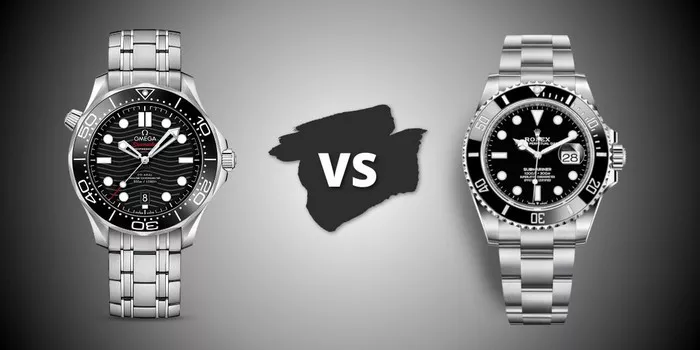In the realm of luxury timepieces, the perennial debate between Omega and Rolex enthusiasts fuels discussions about craftsmanship, design, and brand prestige. This article seeks to dissect the age-old question: Is Omega truly better than Rolex? Through a lens of historical context, technical innovation, and brand philosophy, we explore the nuances that differentiate these two horological giants.
1. Heritage and Legacy: A Tale of Timeless Prowess
Omega’s Olympic Journey and Rolex’s Crowned Legacy
Omega’s Olympic Heritage:
Omega, as the official timekeeper of the Olympics, boasts a storied history intertwined with precision and sportsmanship. The brand’s legacy in timing world-class events contributes to its reputation for accuracy and reliability.
Rolex’s Regal Pedigree:
Rolex, with a crown emblem symbolizing its regal status, has long been associated with luxury, exclusivity, and a commitment to precision. The brand’s historical ties to exploration and innovation further enhance its esteemed legacy.
2. Technical Innovation: A Dive into Movements and Materials
The Heartbeat of Time: Omega’s Co-Axial Escapement and Rolex’s Perpetual Movement
Omega’s Co-Axial Escapement:
Omega has pioneered technical advancements with its Co-Axial escapement, reducing friction and enhancing long-term accuracy. The brand’s commitment to innovation places it at the forefront of horological technology.
Rolex’s Perpetual Movement:
Rolex, synonymous with the perpetual movement, introduced the first self-winding watch. The brand’s dedication to precision and reliability, coupled with its in-house manufacturing, cements its status as a technical innovator.
3. Diverse Designs: Exploring Aesthetics and Versatility
Omega’s Seamaster Elegance and Rolex’s Iconic Oyster Case
Seamaster’s Understated Elegance:
Omega’s Seamaster collection exudes a blend of elegance and versatility, making it suitable for both formal occasions and underwater exploration. The variety in design caters to a broad audience.
Rolex’s Iconic Oyster Case:
The Oyster case, a Rolex hallmark, represents a perfect marriage of form and function. Renowned for its robustness and waterproof capabilities, the Oyster case remains an enduring symbol of Rolex’s design prowess.
4. Materials and Craftsmanship: The Marriage of Luxury
Omega’s Ceragold and Rolex’s Everose Gold
Ceragold Brilliance:
Omega introduces innovation with Ceragold, a material seamlessly blending ceramic and 18K gold. The result is a bezel that epitomizes both luxury and durability, showcasing Omega’s commitment to craftsmanship.
Rolex’s Everose Gold Mastery:
Rolex, with its proprietary Everose gold alloy, achieves a harmonious blend of luxury and longevity. The brand’s meticulous approach to materials ensures that each Rolex timepiece exudes opulence.
5. Brand Philosophy: Luxury Narratives and Market Appeal
Omega’s Approachable Luxury and Rolex’s Enduring Prestige
Omega’s Approachable Luxury:
Positioned as a more accessible luxury brand, Omega seeks to balance innovation and affordability. This strategy appeals to a diverse audience, making Omega watches more attainable for enthusiasts.
Rolex’s Enduring Prestige:
Rolex, with a steadfast commitment to exclusivity, positions itself as a brand synonymous with enduring prestige. The deliberate scarcity of certain models contributes to Rolex’s allure and desirability.
Conclusion: A Matter of Personal Preference
In the perennial debate between Omega and Rolex, declaring one brand superior to the other becomes subjective. Both Omega and Rolex have cemented their places in horological history, each with its unique strengths and philosophies. The choice between the two ultimately boils down to personal preferences, whether one values Omega’s innovative spirit and approachable luxury or Rolex’s enduring prestige and technical prowess. In the world of luxury watches, the true winner is the one that resonates with the wearer, as horology becomes not just a measurement of time but an expression of personal style and preference.

